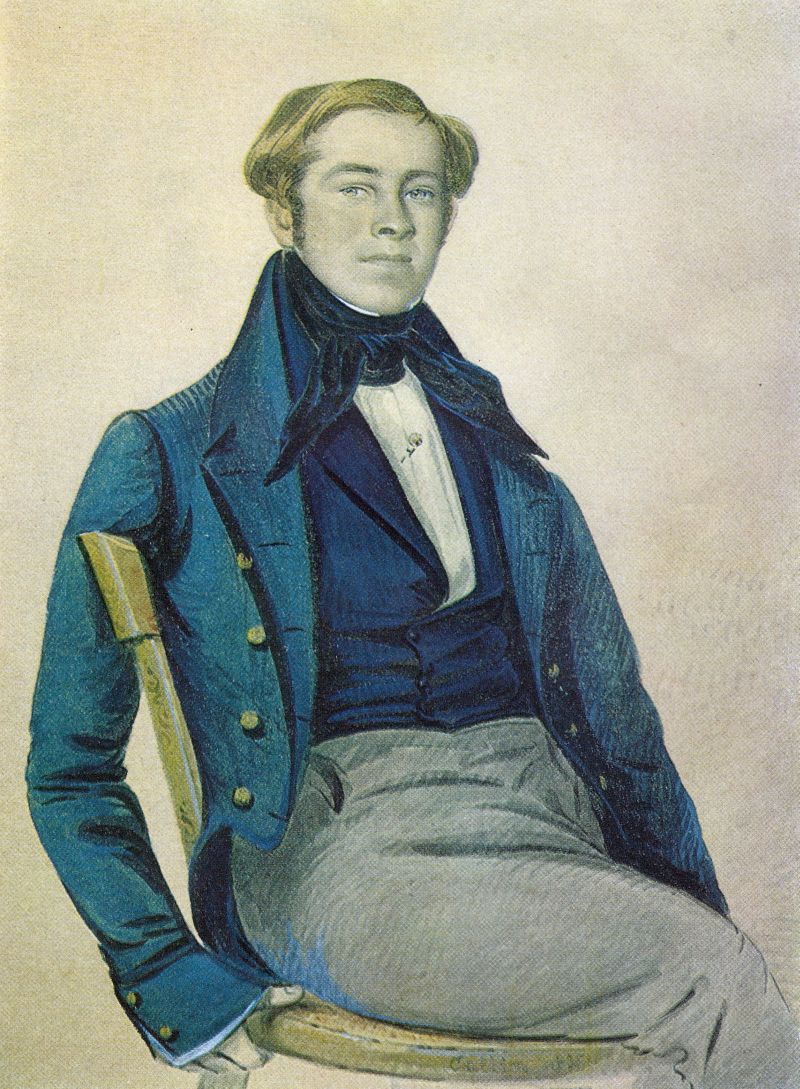Authors:
Historic Era:
Historic Theme:
Subject:
April 1965 | Volume 16, Issue 3


Authors:
Historic Era:
Historic Theme:
Subject:
April 1965 | Volume 16, Issue 3

Death came early and violently to Joe Chadwick. He was barely twenty-four when he died at Goliad, Texas, in 1836. Only a few weeks before, he had sent his mother a portrait of himself just painted by his good friend George Catlin, the great artist of the early American West. Catlin was pleased with the picture, which he made in St. Louis late in 1835. “I rejoiced to find,” he wrote, “that I had given to it all the fire and all the game look that had become so familiar and pleasing to me in our numerous rambles in the far distant wilds of our former campaigns.”
One campaign, the basis of the almost fraternal fondness between Chadwick and Catlin, had narrowly missed disaster. It was the expedition under Colonel Henry Dodge, sent in the summer of 1834 from Fort Gibson, Indian Territory, into the lands of the Comanches, Kiowas, and Wichitas of Texas, to explore and to make peace treaties. Catlin went along as a civilian observer and pictorial reporter; Chadwick went as his assistant. They were in good standing with Colonel Dodge, General Henry Leavenworth (who accompanied the regiment of dragoons as far as the Texas border), and such young officers as Lieutenant Jefferson Davis. Everything went splendidly at first: there were exciting buffalo hunts, pleasant evenings around the campfire, and the extraordinary beauty of the unspoiled country.
The idyl did not long continue. A cholera epidemic suddenly hit both men and horses. General Leavenworth, himself mortally sick, ordered Colonel Dodge to move on into Texas with the 250 dragoons still unaffected; Catlin and Joe Chadwick went with them. In the days that followed occurred the friendly but sometimes nervous dealings with the rough-riding Comanches that resulted in Catlin’s famous series of drawings and paintings of that little-known tribe.
Walt Whitman, in “Song of Myself,” wrote of the men who were slain at Goliad:
But the expedition still had not escaped the cholera. It broke out among the Americans in their camp near a large Comanche village; and now Catlin, too, caught the germ. Another detachment of the healthy pushed farther west to seek out the Pawnees and the Kiowas, leaving the artist and dozens of sick soldiers in Comanche country. Catlin sent Chadwick as his substitute, and although soldiers continued to succumb along the way, Joe not only managed to keep a daily journal but even sketched a Pawnee village well enough so that